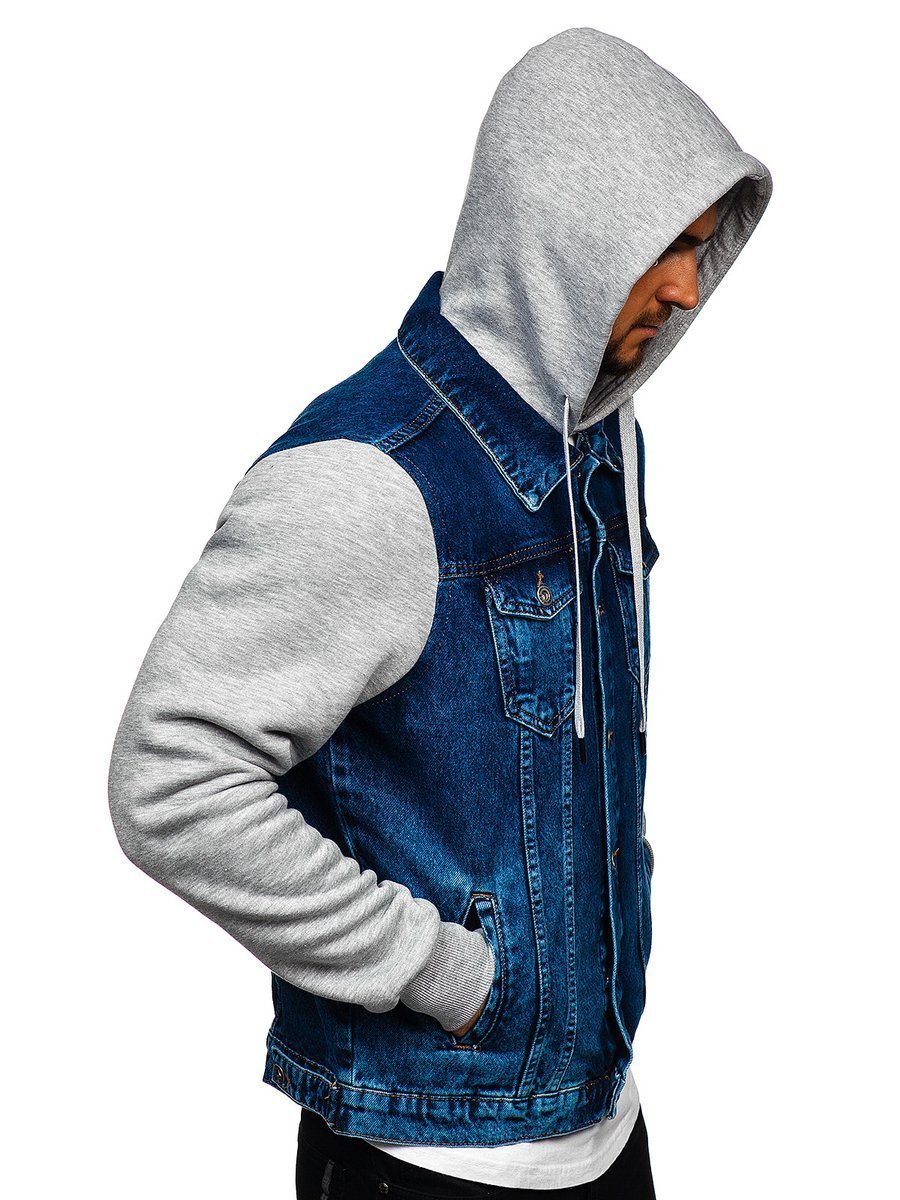How to Wash a Denim Tears Garment Preventing Fading or Shrinkage
Clean using cold, be gentle, reduce friction, while avoiding heat. That’s the formula: chilled water, gentle color-safe detergent, inside-out within a protective bag, low spin, and air-dry flat away from sun.
A Denim Tears garment is commonly garment-dyed cotton fleece with screen-printed or puff-printed graphics. Such decisions render the fabric comfortable and deep in color, but they also raise the stakes: dye may release with abrasion, prints can crack under heat, and cotton shall contract when you blast it with dryer heat. Should you regulate temperature and friction—while using the right detergent—you keep the pigment rich and the fit intact.
What makes a Denim Tears sweatshirt prone to fading or shrinkage?
Garment dye, cotton fleece, and printed artwork is susceptible to heat and friction, which speed dye loss and size reduction. Primary “deterioration” takes place in the first couple washes and when dryers are employed.
Garment-dyed fleece gets its color after the piece is constructed, so the dye sits more at the surface and can transfer if you rub it against other items or use high-alkaline detergents. Cotton contracts via relaxation and felting shrinkage when exposed to heat and tumbling. Applied and puff prints suffer when applying excessive heat or high rotation, since binders and foams are stressed. The solution is simple: cold water, gentle mechanics, and no dryer.
Prep checklist before you ever hit Start
Perform a brief label check, a brief dye test, and set the garment up to minimize friction. Such preparation avoids most fading and shape loss.
Review the washing label and follow instructions when they conflicts with anything mentioned here. Check color stability: moisten a black on black denim tears hoodie white cloth in cold water and press on a hidden seam for 10 seconds; if color transfers, definitely wash alone, chilled, and utilize a color-catcher sheet. Remove items, fasten zips, knot drawcords, reverse the sweatshirt inside out, and put it within a large mesh washing bag. Clean with matching darks only and maintain the batch small so the garment isn’t rubbing against rough items including denim or towels.
Which detergent and additives truly preserve the color?
Utilize a liquid, color-care detergent without brightening compounds, and avoid bleach and heavy softeners. For new hoodies, a color-catcher sheet and a touch of distilled white vinegar during the rinse can reduce color bleeding.
Select a soft, pH-balanced liquid labeled \\”dark care\\” or \\”color care.\\” Avoid powder detergents with high alkalinity, eliminate chlorine bleach entirely, and be wary of oxygen bleach around prints. Avoid fabric softener for fleece; it may clog up the surface and dull graphics. A single color-catcher sheet in the basin catches loose dye in first washes. For the first two or three cleanings, include half cup distilled white vinegar within the rinse compartment; it helps neutralize residual alkalinity and can limit noticeable transfer on many garment-dyed cottons. Forever test any additive on an hidden seam beforehand.

Washer configurations that don’t wreck it
Use cold water at 20–30°C, the soft cycle, minimal spin at 400–800 rpm, and a small, soft load. Greater gentle movement equals less dye fading.
Pick cold cycle, delicate or hand-wash cycle, and reduce spin speed. If your machine allows, add an extra cycle clearing detergent that can dull dark fibers. Maintain the basin under-filled to reduce friction. Avoid pre-wash or soil-level boosts that increase movement. When your unit auto-warms \\”cold,\\” set a manual 20–30°C.
Should you hand wash instead?
Indeed—manual washing offers the lowest abrasion plus superior color retention, especially for fresh, dark, or limited releases.
Load a basin with cold water, blend in a teaspoon of liquid color-care detergent, submerge the inside-out hoodie, and gently agitate for one minute. Rest for ten minutes, then rinse in cold water until it runs transparent. Press out water without wringing, roll in a towel to remove more liquid, then position flat to dry. Hand washing is slower but excellent for preserving prints and pigment.
Stain strategy: clear grime without lifting pigment
Treat stains by type, on the inside-out hoodie, with cold water and focused treatments, holding removers away from graphics when feasible.
For oily food or sunscreen, dab some clear dish soap on the spot, tap with a mild brush, pause five minutes, then rinse cold. For mud, let it dry, brush off solids, then treat with a soft cleaner blend. Against protein-derived marks like sweat or blood, apply cool water and an enzyme cleanser at the area, then clean; eliminate warm water, which sets protein stains. Against pigment migration, soak the entire sweatshirt individually within cold water with a color-care detergent and a color-catcher; redo if necessary before the next use. With ink, apply a stain pen carefully on the back of the cloth and verify first; solvents can spread ink and affect prints. Keep bleach and aggressive peroxide gels clear of artwork and pigment areas.
Drying process: how to you avoid shrinkage and print cracking?
Skip the dryer. Reform the moist hoodie, lay it horizontally on a rack, and dry it in the shade with moving air.
Post-wash, remove out water, then lay the hoodie flat on a dry rack or towel, shoulders aligned and sleeves straight. Press to form to original measurements, particularly in length. Maintain it clear of direct sun to prevent UV fade. Run a fan to speed the process without heat. Skip hanging via the hood or shoulders while damp; the weight can stretch seams and distort the fit. Warmth and rotation drive cotton shrinkage plus crack graphics, so keep it air-only.
May you iron or steam a Denim Tears hoodie safely?
Utilize steam or low iron inside out and never press directly on artwork. A protective cloth is non-negotiable around designs.
Minor wrinkles release with steam while the sweatshirt hangs; keep the head clear of graphics. If you must iron, turn the sweatshirt inside out, set the iron to low cotton or synthetic blend, place a thin cotton cloth between the pressing tool and fabric, and avoid graphic zones entirely. Press, skip sliding. Excessive heat may gloss cotton fleece plus damage print binders.
Inter-wash maintenance that keeps it looking pristine
Let it breathe, de-pill gently, and keep clear of sunlight. Launder only when truly dirty to limit pigment loss.
After wearing, hang the hoodie on a broad hanger for an hour to release moisture and odors, then fold. Against lint buildup or light pilling, utilize a mild sweater comb or fabric shaver lightly and only on the fleece face—not over graphics. Locally clean versus of full washes if practical. Store folded in a cool, dark location; lengthy sun exposure fades pigment even when not not washing.
Problem-solving: bleeding, color loss, or a tight fit post-cleaning
Should you notice dye bleed, rewash cold with a color-catcher right away. If it feels tighter, relax the material via a cold soak and gentle reshaping.
Pigment on other items typically sets during drying, so act fast: rewash influenced items individually with a color-catcher and cool water before they dry. If the hoodie looks dull, detergent buildup could be the culprit; run a cold rinse cycle with a splash of vinegar, then dry flat. Against minor post-laundering tightness, soak the garment in cool water for ten minutes, carefully extend on a flat area to your measurements, and let it air; you can regain a bit ease, but lost length from excessive heat shrinkage is rarely fully reversible. If you accidentally tumble-dried it, avoid applying heat, and consider a professional wet-cleaner for controlled relaxation finishing.
Comparison chart: ideal methods at a view
Pick the technique that matches your comfort level and time. Cool, soft, and air-dry consistently win on color and fit.
| Method | Water Temperature | Process/Treatment | Spin | Supplements | Pros | Risks | Fading Risk | Contraction Risk | Time |
|---|---|---|---|---|---|---|---|---|---|
| Machine, best-practice | Cool (20–30°C) | Soft + laundry bag | Minimal (400–800 rpm) | Color-catcher, vinegar rinse | Convenient, controlled abrasion | Some friction vs. hand wash | Low | Minimal | Moderate |
| Hand wash | Cold | Gentle soak and swish | None | — | Best for color and prints | Time/labor, full rinsing necessary | Extremely low | Minimal | Long |
| Dryer use | Warm/Hot | Tumble | High | — | Fast | Contraction, graphic damage, color loss | High | High | Short |
| Commercial wet cleaning | Controlled | Gentle mechanical systems | Low | — | Expert handling, measured drying | Cost, availability | Extremely low | Very low | Moderate |
Expert Tip
For the first three washes of a recent, dark garment-dyed hoodie, run it alone: apply a mesh bag, add a color-catcher sheet, and select bonus rinse cycle. This pairing minimizes abrasion and pulls stray pigment so it doesn’t redeposit and “dull” the surface.
Rapid facts most people miss about hoodies and color care
Fact 1: Most cotton shrinkage happens via dryer heat and mechanical tumbling, not through cold-water washing. Item 2: Pigment-dyed garments use a binder positioned near the surface; wear and high-alkaline detergents loosen that binding and speed fade. Point 3: Cleaners with optical brighteners could make dark colors look dull via reflecting blue-violet light; color-care detergents avoid these agents. Point 4: Reduced spin speeds reduce micro-abrasion and help keep printed inks from tension-splitting. Fact 5: Enzyme “color care” formulas often include cellulase that gently removes fuzz, which can make darks look richer by reducing surface haze.
Bringing it all together: the no-fade, no-contraction method
Flip inside out, bag it, wash chilled on soft with a liquid color-safe cleanser, apply a color-catcher for initial cycles, reduced spin, and extra rinse cycle. Then reshape and air-dry flat in shaded areas.
This method focuses on the two forces that ruin a Denim Tears hoodie—heat and wear—while eliminating residue that makes dark material seem tired. Maintain infrequent washing, spot clean between uses, and handle stains by type. When you must have to choose between ease and preservation, skip the heat-drying always. Your color stays saturated, your graphics remain crisp, and the fit stays exactly as you bought it.
